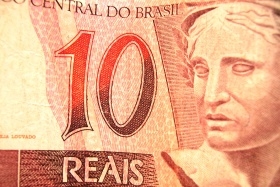Beware the rises of March

Emerging market FX watchers have been absorbed by the strengthening of EM currencies in the past couple of months. In March, the JPMorgan EM currencies index recorded its best month since it was founded in 2010, rising 5.5%.
The Malaysian ringgit rose 7.1% against the dollar, its best ever monthly advance. Against the euro, the Brazilian real, the world’s second-worst performing currency in 2015, rose by 6% and Russia’s rouble increased 7%.
The trigger was dovish comments from the US Federal Reserve, making interest rate rises unlikely and therefore EM assets relatively more attractive – but the rally had still not petered out by end-April.
Over a three-month period to 25 April Brazil’s real was up 14.4% and the rouble up 18.9% – even the beleaguered South African rand has been a stiller performer, up more than 13%.
All this is positive for US exporters that have laboured under a strong dollar since 2014, as well as Chinese ones that have been harmed by their country’s dollar-pegged yuan. Opinion, however, is divided as to whether fundamentals are sufficient to justify a continued rally.
On the one hand, the dovish smoke signals from the Fed and reduced perception of Chinese risk (an improvement in Chinese trade data pointed to a stabilisation) could change with circumstances.
But strengthening oil prices – despite the lack of progress at Doha – have also played a role in bolstering the currencies of hydrocarbon-based giants such as Russia and this may prove more sustainable.
Lower inflation in emerging markets could afford greater scope for central banks to ease policy, which would be supportive of currency strength. But some analysts are circumspect. Neuberger Bauman’s multi-asset class team expects the Fed to raise rates one or two more times this year, which could give the dollar short-term support and take the wind out of emerging market currencies.
Lazard Asset Management, in its emerging markets outlook issued in April, deemed the rally in EM currencies as unsustainable; it sees little evidence of the needed adjustments to the supply-demand imbalance.
Oil prices have rebounded 40% since reaching a thirteen-year low in January, moving in near lockstep with emerging markets currencies, and price movements in key base metals such as copper and iron ore have been equally impressive.
While a dovish Fed and recent dollar weakness are near-term positives, it sees that the move in commodities as simply a bear market rally albeit on unstable ground.
Found this useful?
Take a complimentary trial of the FOW Marketing Intelligence Platform – the comprehensive source of news and analysis across the buy- and sell- side.
Gain access to:
- A single source of in-depth news, insight and analysis across Asset Management, Securities Finance, Custody, Fund Services and Derivatives
- Our interactive database, optimized to enable you to summarise data and build graphs outlining market activity
- Exclusive whitepapers, supplements and industry analysis curated and published by Futures & Options World
- Breaking news, daily and weekly alerts on the markets most relevant to you


